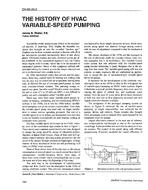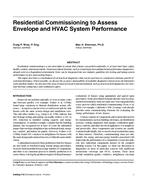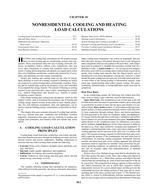In almost all cases, building energy simulations aredone with an entire year of weather data. As buildingmodels become larger and simulation programs becomemore complex, simulation runtimes have become anissue, despite the overall improvements in computerspeed.
One obvious way to reduce runtimes is to not run thesimulation for an entire year, but for a subset of daysextracted from the year. The trade-off for the quickerruntimes is of course a loss in accuracy. Previousefforts using this technique have simply taken a randomsampling of the time series, such as doing thesimulation for four arbitrary 15-day periods spacedequally from a “typical year” weather file.This paper investigates using the same techniquedeveloped for selecting the most representative monthsmaking up a “typical year” weather files but applies itto select a 7-day time series, i.e., a “typical week”, thatbest matches the average long-term climatic conditionsof a month.
If the source weather data is a “typical year” weatherfile, this technique analyzes the cumulative frequencydistributions (CFD) of temperature, solar, wind, etc., foreach of the 22-25 7-day series within that month,compare them to the CFD for the full month, and thenselects the 7-day series with the smallest deviation inthe CFDs as the “typical week”. The twelve “typicalweeks” are then concatenated to produce a reduced“typical year” weather file containing only 12, ratherthan 52, weeks of data. For simplicity, the date stampfor each 7-day series can be set to the middle of eachmonth. There are many simple ways to make suchreduced weather files compatible with existingsimulation program, although relatively modest changeswould be needed to simplify their use and speed upruntimes by eliminating re-initialization between the“typical weeks”. Once that is done, runtimes should bereduced to 1/4 with little loss in accuracy compared torunning the full year.
If the source weather data is the historical time-series,that should be used instead for selecting the “typicalweek”, which would greatly expand the number ofcandidate 7-day series by the number of years in thetime-series. In such instances, it has been found thatthe reduced weather data set has an equal or at timeseven better fidelity than the “typical year” file to theaverage long-term climate conditions.
Citation: ASHRAE/IBPSA-USA Bldg Simulation Conf, 2016
Product Details
- Published:
- 2016
- Number of Pages:
- 7
- Units of Measure:
- Dual
- File Size:
- 1 file , 3.2 MB
- Product Code(s):
- D-BSC16-59


